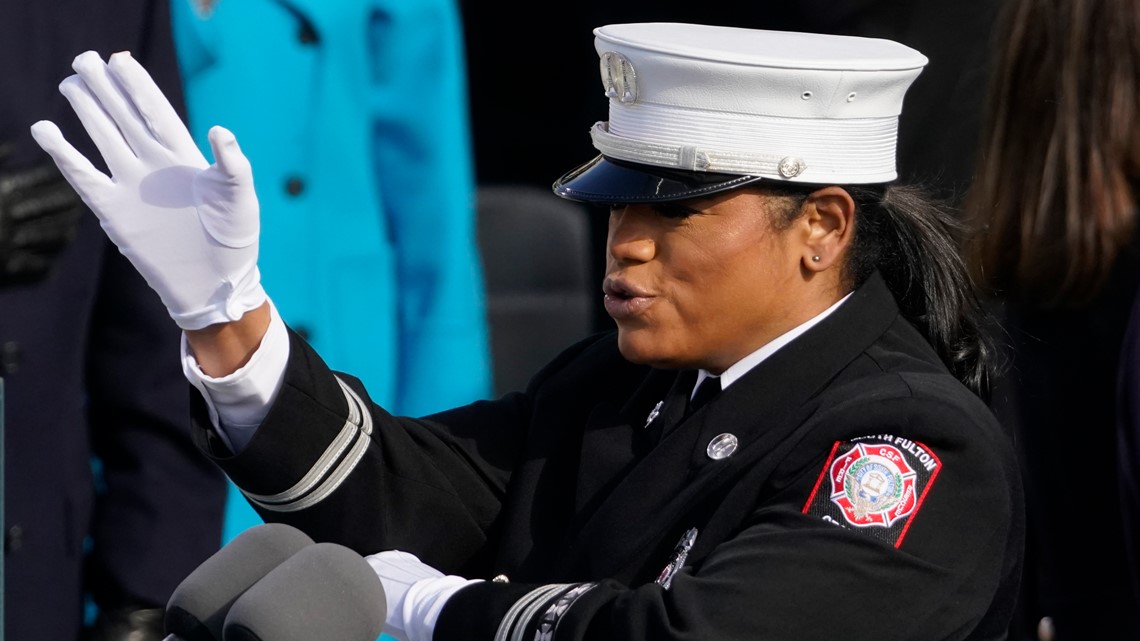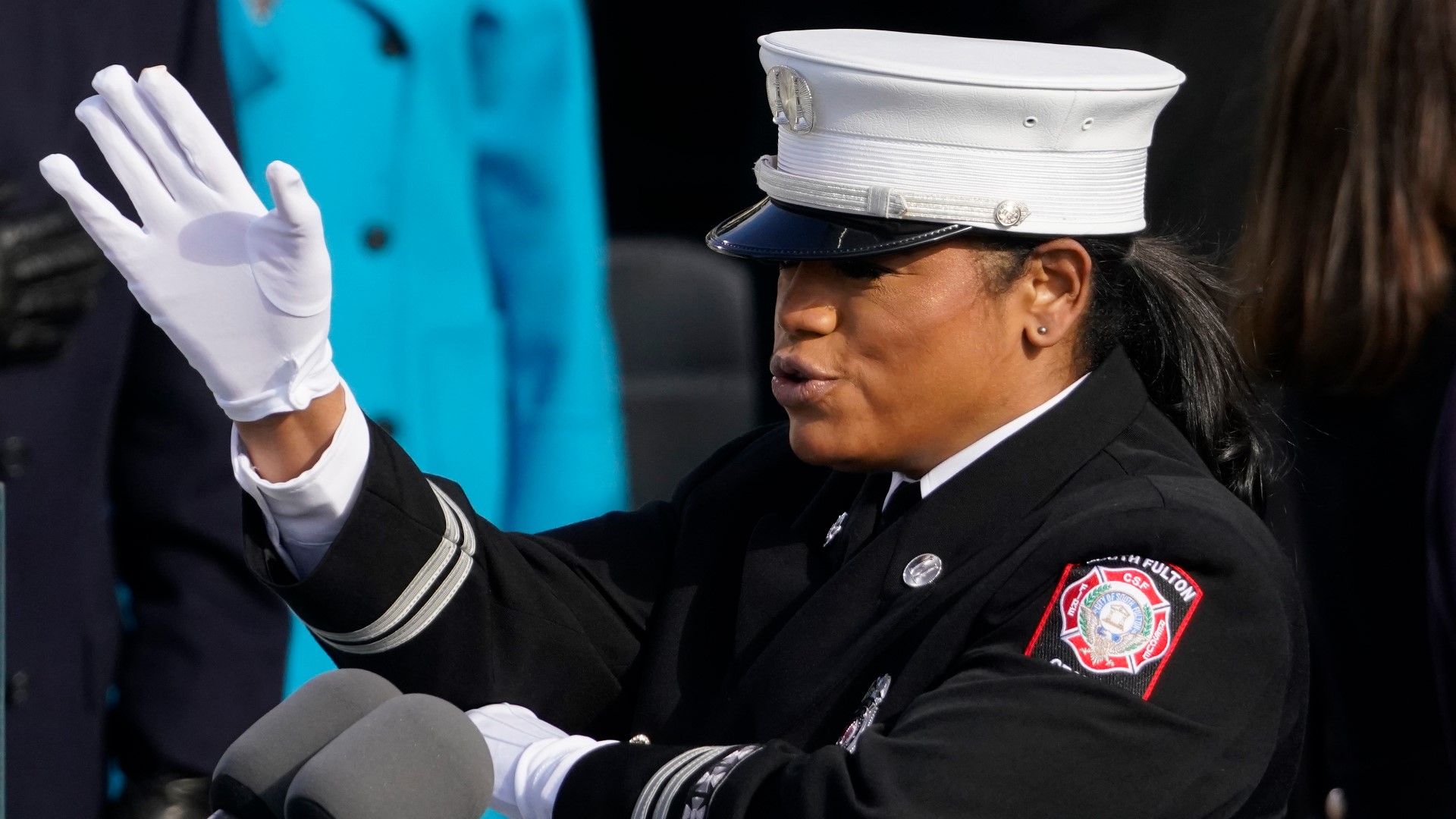WASHINGTON — Like many others across the country, Mandy Turner and Katie Cue were watching the inauguration ceremony on Wednesday.
They said a powerful moment that caught them by surprise.
“Oh, goosebumps,” Turner signed about what she felt during the Pledge of Allegiance.
It was recited by a fire captain from Georgia. And she not only said the pledge, she also interpreted the entire thing in sign language.
“I had goosebumps, that was amazing,” signed Turner, who is deaf.
“Often the interpreters are spotlighted for a very brief moment in time, or if they’re panning the crowd you might see it," signed Cue, who is also deaf. "Or if you want to see an interpreter, you have to pull up a separate link. But to see that, on stage, in the spotlight, a woman signing, and they showed her the entire way [through], that was very inspiring.”
Cue and Turner both work for the Colorado Commission for the Deaf, Hard of Hearing, and DeafBlind. That work includes scheduling interpreters as well as helping with communication and services for Colorado’s Deaf community.
This year, part of the job has also included sign language interpretation for COVID-19-related briefings led by the Governor and state health leaders. Turner and others are frequently seen in a video box next to the speakers during those important briefings, sharing health updates and information in sign language.
“The information related to COVID was very time-sensitive," Cue signed. "It was critical. We needed to make sure that our DeafBlind community had full access to that information,” Cue explained. “So having that interpreter on-screen with the Governor was a valued resource, for the community, for the state. They were getting direct information, direct communication, and that’s a benefit that’s vitally important.”
“Having a Deaf interpreter on screen is a huge improvement,” signed Chelsea Lee, a Deaf program specialist for the City of Denver. She is also deaf.
“Deaf people are able to see and watch where they can get tested, locations, important information like that," she signed. "It made a huge difference."
While sign language interpreters have provided these kinds of services long before the pandemic, COVID-19 created a situation where they were seen much more frequently, with a larger audiences watching on TV or through web streams, and they were shown on-screen next to the speaker throughout an entire event.
Their visibility increased not only in Colorado but at COVID-19 briefings around the country.
“I hope this becomes the norm, and it absolutely should be,” said Lorrie Kosinski, the director of the Denver Office of Sign Language Services.


“We don’t want to leave anybody out of the information loop," she said. "Whether it’s the weather, or the latest information going out regarding COVID, or someone wants to take a Parks and Rec class. There’s no reason to exclude anyone, especially the Deaf community. So I’m hoping the visibility we’ve seen the past year, of sign language interpreters, only becomes the norm -- that we see them everywhere, all the time.”
Cliff Moers, director of the Colorado Commission for the Deaf, Hard of Hearing, and DeafBlind (CCDHHDB) offered this statement by email Wednesday night:
“Having access to language is a human right, and many Deaf Coloradans rely on sign language as their primary language. The CCDHHDB appreciates the ongoing commitment by Governor Polis and the Colorado Department of Human Services to include sign language interpreters in press conferences about the coronavirus pandemic, and other critical matters. These efforts to include the signing Deaf community in having access to information provides a meaningful way to include this community in broader efforts to be inclusive of all people.”
With greater visibility, the Deaf community and interpreters said they hope greater access will follow. And the sign language moment, during the Inauguration, remains a memorable one.
“Yes, we’re starting to see those barriers break down, finally,” Turner signed.
“That was access, right there, perfect example," Cue signed. "Very visible, right there."
“I thought it was awesome,” Lee added. “Having that access and visibility with sign language was impressive. It’s a step forward. We’re definitely making progress.”
SUGGESTED VIDEOS: Feature stories

